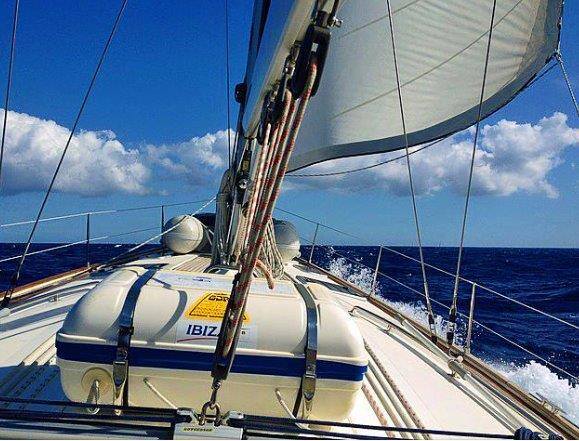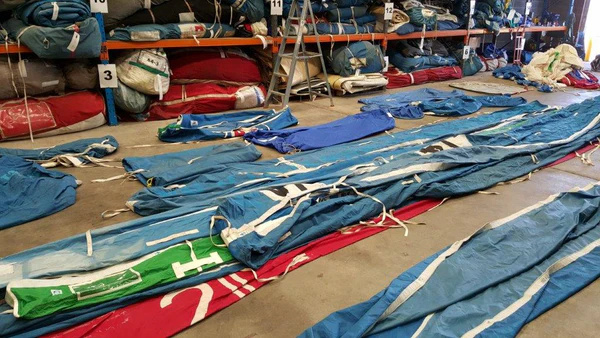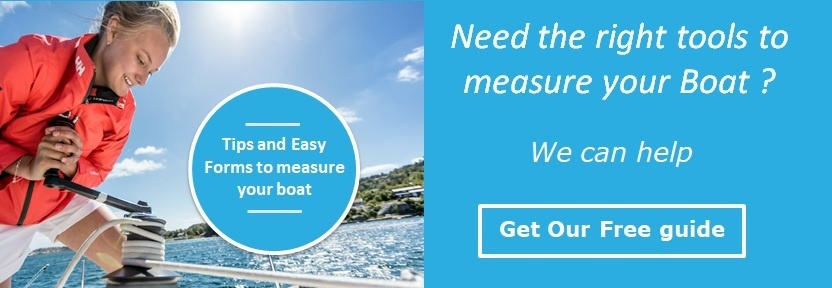So you’ve decided to invest in a spinnaker. How do you know which type of kite is best for your needs?
There are many varieties of spinnakers all with different shapes. Depending on your level of competence and the number of crew, there are specific shaped spinnakers for specific wind angles. For example on a Racing Yacht we would carry at lease 5 different shaped spinnakers for various wind angles and wind speeds. We also have a full crew. However on a Cruising Yacht you want to carry less spinnakers and you almost certainly have less crew.
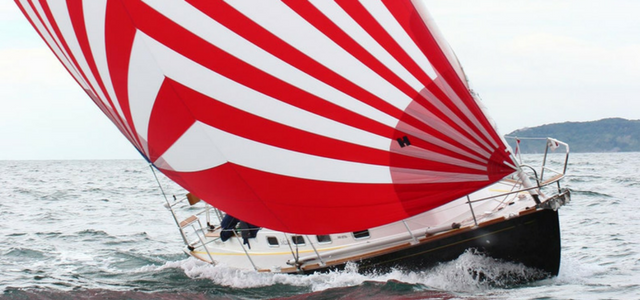
Cruising Asymmetrical and Symmetrical Spinnakers
Are an all purpose spinnaker with an Asymmetric design that allows you to sail without a spinnaker pole by tacking the sail to the center line of the boat forward of the forestay. The Asymmetric design is basically a large Genoa made of spinnaker cloth usually .75 to 1.5 oz in weight. These sails have various names for example MPS (multi purpose spinnaker), Screecher, Gennaker, Code O. These are all Asymmetric spinnakers with different asymmetrical shapes depending on the wind angles and wind speeds. However and MPS is the an all round cruising spinnaker that covers the broadest range of wind angles. See the polar diagram below.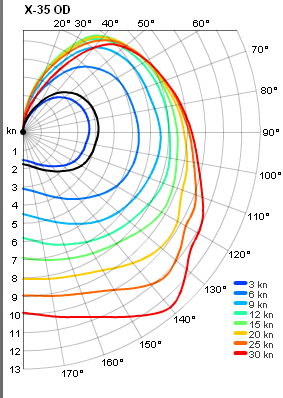
Racing Spinnakers for sailing yachts
Whilst a fully crewed racing yacht with a spinnaker pole would have a large selection of downwind sails such as a .5oz S1 (vmg) light air kite for pole on the forestay sailing. Then as the wind increases a .75oz S2 running spinnaker. For reaching in medium breezes a 1 oz A3 flatter cut kite is required. Then in a medium to fresh breeze of 18-28 knots of True Wind Speed a 1 - 1.5 oz S4 running spinnaker would be desirable and after that a 1.5 oz heavy air reduced area spinnaker for 30 knots +. Most racing yachts now with a spinnaker pole over 35' would also carry either a mast head or fractional Code Zero for optimum apparent wind angles between the headsail and symmetrical spinnaker, commonly between 50 - 80 awa. The Code Zero (A0) is usually manufactured from a laminate material in a tri radial construction with a luff cable installed in the luff pocket (tape) and is mounted on a furler and wound up like a roller furler genoa on a flexible cable. See sail chart below which explains the cross overs mentioned above.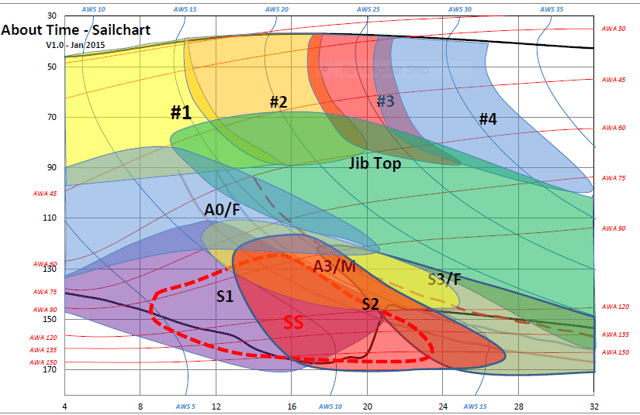
SAIL HANDLING - Adapting your equipment to suit your Spinnaker
For the cruising sailor, sail handling is also paramount and there are various aftermarket products available to assist the short handed cruising crew or couple.
1. Snuffers
Snuffers allow the sail to be hoisted in a nylon sleeve to the mast head then a continuous line is pulled to raise the "hoop" and the sail then fills, to "douse" the line is pulled the opposite direction and the "hoop" collects the sails into the sleeve. This is all done from the foredeck relatively safely near the mast. There are a few brands available ATN being one of the most renowned.2. Top down furlers
Top Down Furlers are becoming increasingly popular, these are more efficient in higher winds and can be activated from the cockpit versus going on the foredeck. However there is more cost involved as you require a "anti - torque" cable and a furler which has a continous line lead back to the cockpit. There are many brands now available from Facnor, Profurl, Karver and Selden.3. Retractable Bow Poles
These gadgets allow you to tack the asymmetrical spinnaker further forward and with a bit of luck in front of your anchor, this assists in getting the spinnaker in clearer air in front of your mainsail.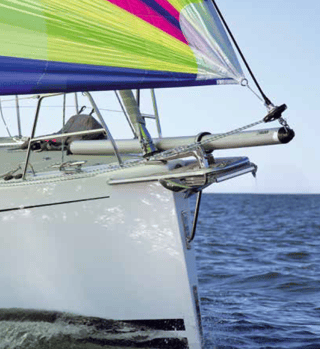
4. Control lines
Of course you will require spinnaker sheets, the rule of thumb here is to have them at least 2 lengths of your overall length. You can use spectra if you want to but double braid or pre stretched double braid works just fine, i am a big fan of just tying bowlines in the clew for a few reasons: First and foremost the sheets will not come off for a variety of reasons and if you tip over and flog the spinnaker they will stay on there. When gybing they will not tear through the fabric and damage the sail rubbing against your furling headsail. We always set up sheets for an outside gybe, that is the opposite of how you would attach the genoa sheets, so when you gybe the sail rotates outside the luff and basically goes around outside everything on the yacht including the sail, as in the clew is most forward.
Happy sailing and spinnaker flying from The Sail Exchange

